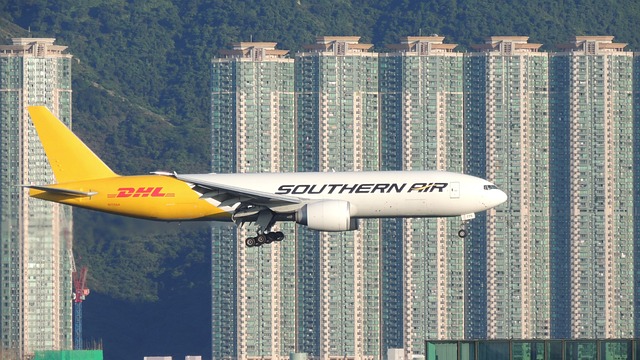Reducing Carbon Impact Through Smart Route and Mode Selection
Smart route and mode selection can significantly lower carbon emissions from travel and transport, whether for daily commuting, business journeys, or freight logistics. This overview highlights practical approaches—multimodal planning, lastmile strategies, safety and regulatory factors, and technology such as contactless payments and route optimization—that help reduce emissions while keeping journeys efficient, reliable, and accessible in urban and regional contexts.

Reducing carbon output from travel requires deliberate choices about routes, modes, and connections. Choosing efficient itineraries and integrating multimodal options—public transit, cycling, shared mobility, and consolidated logistics—lets individuals and organizations cut emissions without sacrificing convenience. This article outlines practical tactics for planning journeys, commuting patterns, and logistics operations so emissions are reduced while safety and accessibility are preserved.
How can mobility choices reduce carbon emissions?
Selecting lower-carbon mobility options—walking, cycling, rail, or full-capacity buses—reduces per-passenger emissions compared with single-occupancy cars. Optimizing routes to minimize detours, avoid congestion and reduce idle time lowers fuel use for combustion vehicles and improves energy efficiency for electric modes. Short trips under 2–3 km often favor active travel; medium-distance trips can benefit from transit or shared mobility to increase passenger load factors.
Mode choice should reflect trip distance, purpose and available infrastructure. For commuting, park-and-ride or feeder services to rail reduce urban car traffic; for errands, cargo bikes or consolidated pickups can replace multiple van runs. Thoughtful choices improve overall mobility while cutting carbon emissions linked to frequent single-occupant vehicle use.
What role do multimodal itineraries and connections play?
Multimodal itineraries combine modes—bike, tram, rail, bus, and shared-ride—to match each leg of a journey to the most efficient option. Good connections and coordinated timetables reduce waiting time and perceived inconvenience, making public and shared modes competitive with private cars. Reliable transfer windows and sheltered hubs increase comfort and uptake of lower-emission choices.
Trip planners that show combined itineraries and estimated emissions help travelers compare options objectively. When transfers are predictable and simple, people are more willing to use sequences of lower-carbon services instead of driving end-to-end, which can yield substantial reductions in aggregate emissions.
How does lastmile planning affect logistics and journeys?
The lastmile—the final segment of a passenger trip or delivery—can account for a large share of total emissions and operational costs. For passengers, options such as e-bikes, walking or microtransit reduce the reliance on cars for short distances. For deliveries, clustering drop-offs, using cargo bikes, or neighborhood micro-hubs reduces vehicle kilometers and cut emissions from frequent, dispersed stops.
Urban logistics that shift deliveries to consolidated loads or off-peak windows reduce congestion and emissions in dense areas. Integrating lastmile solutions into broader itineraries and logistics planning makes sustainable choices practical and reliable for everyday mobility and freight.
How to factor commuting, safety, and regulations into planning?
Commuting patterns create repetitive demand that planners can target to reduce emissions: employer incentives for transit, carpool matching, and flexible schedules can shift behavior. Safety investments—protected bike lanes, safe crossings and lighting—are prerequisites for increasing active travel and public transport use, as perceived safety strongly influences mode choice.
Local regulations like low-emission zones, parking pricing, and vehicle standards shape fleet composition and mode preference. Aligning route and mode planning with safety requirements and regulatory frameworks ensures changes are viable, legal, and supported by community objectives.
How can contactless payments and technology support sustainable travel?
Digital tools—contactless payments, integrated fare systems, and real-time journey planners—reduce friction across modes and encourage multimodal trips. Seamless payment and unified ticketing make it easier to combine services like transit, bike-share and microtransit in a single itinerary. Reduced transaction friction supports greater use of shared and public options, indirectly lowering per-trip emissions.
Technology also enables route optimization for logistics, improving load factors and minimizing empty runs. Contactless ticketing speeds boarding and shortens dwell times, which can improve overall vehicle flow and marginally reduce emissions across public transport networks.
Measuring carbon and adjusting routes over time
Quantifying emissions with consistent metrics—such as CO2-equivalent per passenger-kilometer or per-tonne-kilometer—helps compare route and mode choices objectively. Emission-estimation tools that model journey combinations show when a longer rail leg plus an active lastmile emits less than an entire car trip. Monitoring usage, telematics and modal shifts provides evidence to refine schedules, connections and incentives.
Data-driven adjustments—improving transfer reliability, targeting commuter corridors, and micro-optimizing delivery routes—create iterative improvements. Transparent measurement and reporting help organizations and planners meet sustainability goals and track real-world progress.
Reducing carbon impact through smarter route and mode selection combines planning, infrastructure, policy and technology. By prioritizing multimodal itineraries, optimizing lastmile solutions, ensuring safety and regulatory alignment, and leveraging contactless payments and data, communities and businesses can lower emissions from everyday journeys and logistics while preserving accessibility and efficiency.





